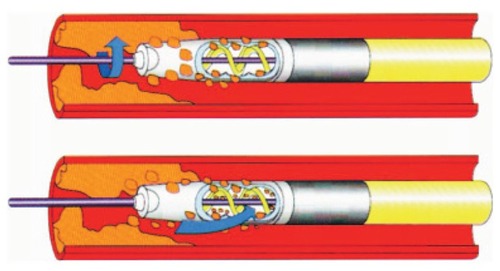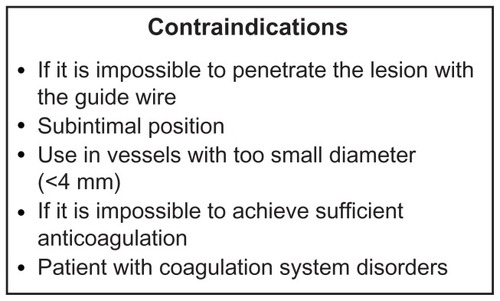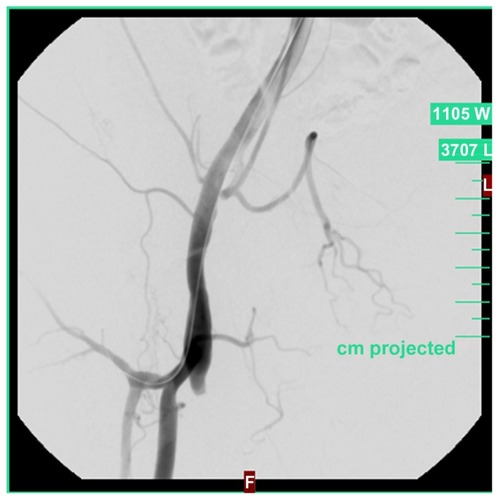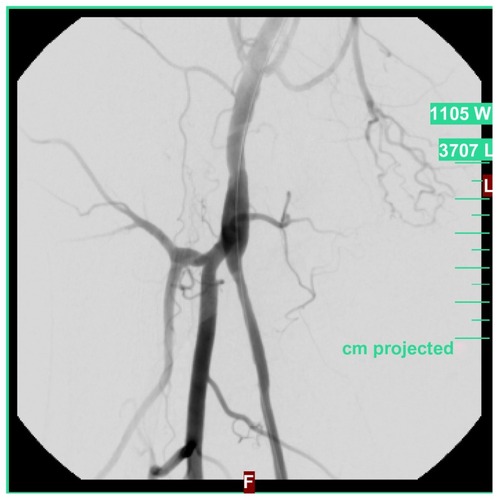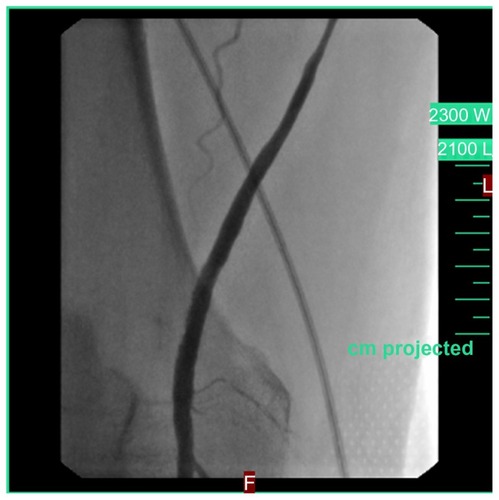Figures & data
Figure 5 Detection of a high-grade insertion stenosis of the bypass as the presumed cause of the occlusion.
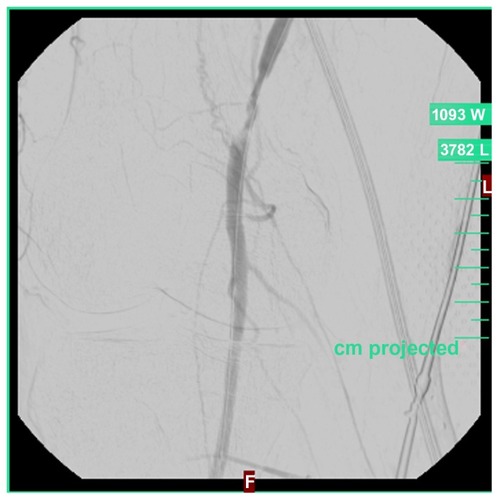
Figure 7 Degeneratively altered femoropopliteal venous bypass on right following acute reopening with rotation thrombectomy (Rotarex® 8 F).
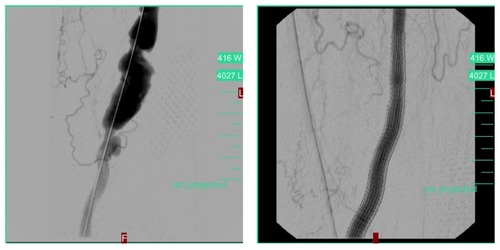
Table 1 Patient data
Table 2 Vessel data
Table 3 Six-month follow-up data
Table 4 Follow-up findings after rotation thrombectomy
